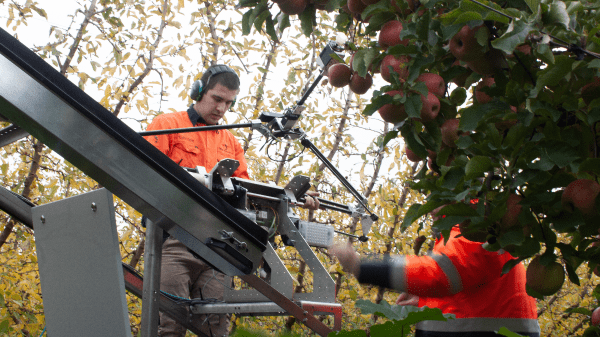With a technology as potentially disruptive to the produce industry as robotics, our experts advise growers to weigh the potential costs and risks before deciding it’s the right move for them.
But along with the new technologies come new opportunities for partnership.
“There is significant investment risk when buying a novel piece of machinery,” says Florian Richter, founder and CEO of Muddy Machines, based in London, England. “To mitigate the risk, an in-person demonstration is absolutely essential. This is why we do things differently—we offer our ‘robots as a service,’ where we align our interests with the grower and only earn money if our robots do their job well.”
Hunter Jay, CEO of Australia-based Ripe Robotics, also emphasizes the rewards of long-term investment in robotics over the risk of initial adoption.
“We’re still in commercial trials, so there’s a big question mark about whether such technology can be scaled up in a profitable way. We think the answer is it can, but that depends on future upgrades to both the machines and our operational infrastructure,” he admits.
“There are advantages as well, though,” Jay says. “Our robots continue to improve over time as the software gets better and more data flows through the system.
“Outside technology is also always improving, making it easier and easier for us to operate and helping make our robots better still. The customer demand for robots that do picking is huge, and we have zero issues finding growers to use our equipment.”
Gad Kober, vice president of business development for FFRobotics, believes the hesitation of some companies to adopt robotics isn’t necessarily due to high risk, but rather a kind of cultural phenomenon.
“We would not say there are specific risks or drawbacks other than those usually ascribed to any investment in new technology,” he says.
“We would, however, depict as a risk the rather high level of hesitation to adopt new technologies expressed by growers. Agriculture is, after all, a rather conservative environment.”
Yet Kober sees the hesitation slowly dissipating with the next generation of growers entering the industry, who he believes are “much more open to new technologies in a general sense.”
This is an excerpt from the Applied Technology department in the March/April 2023 issue of Produce Blueprints Magazine. Click here to read the whole issue.



